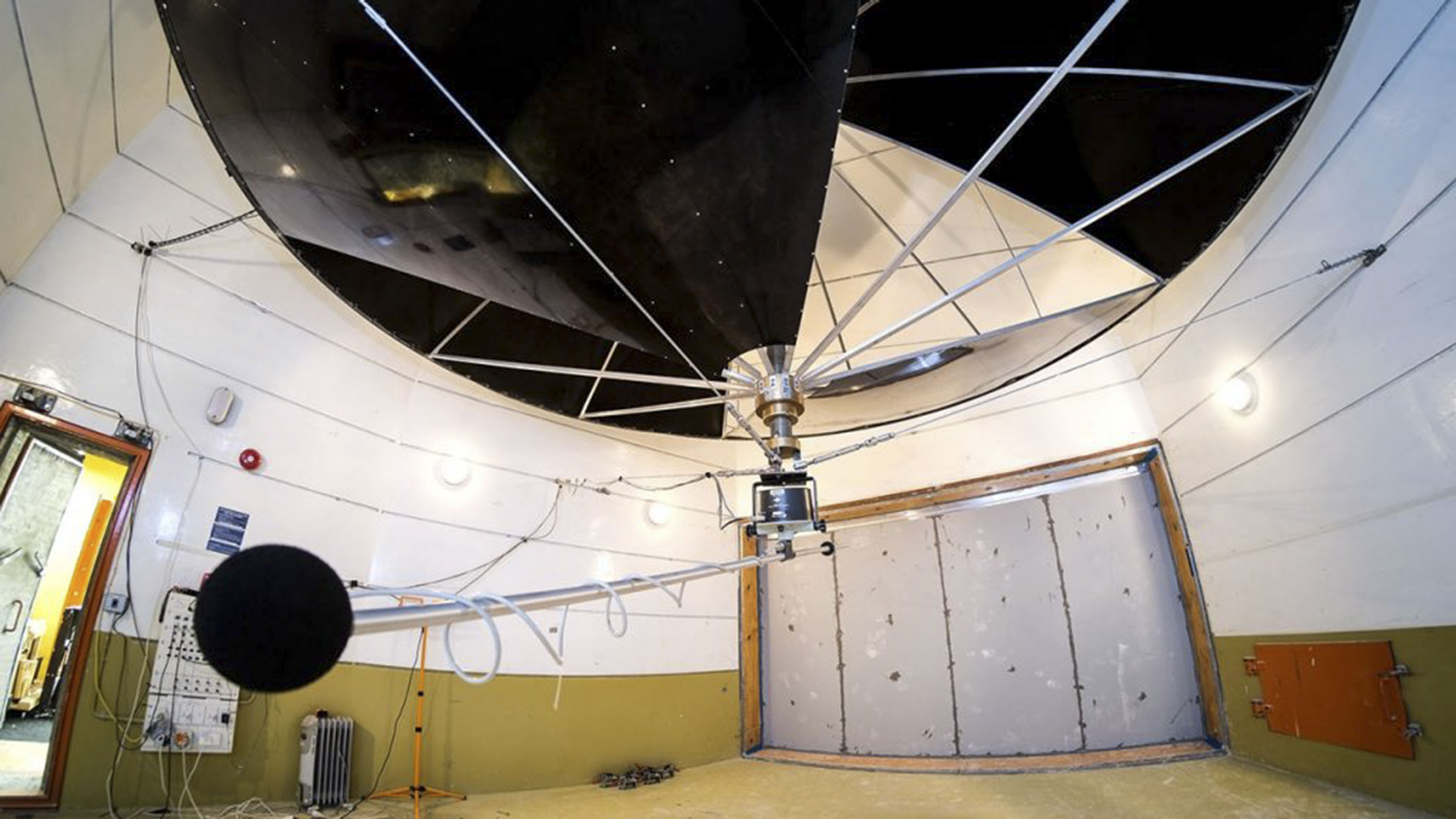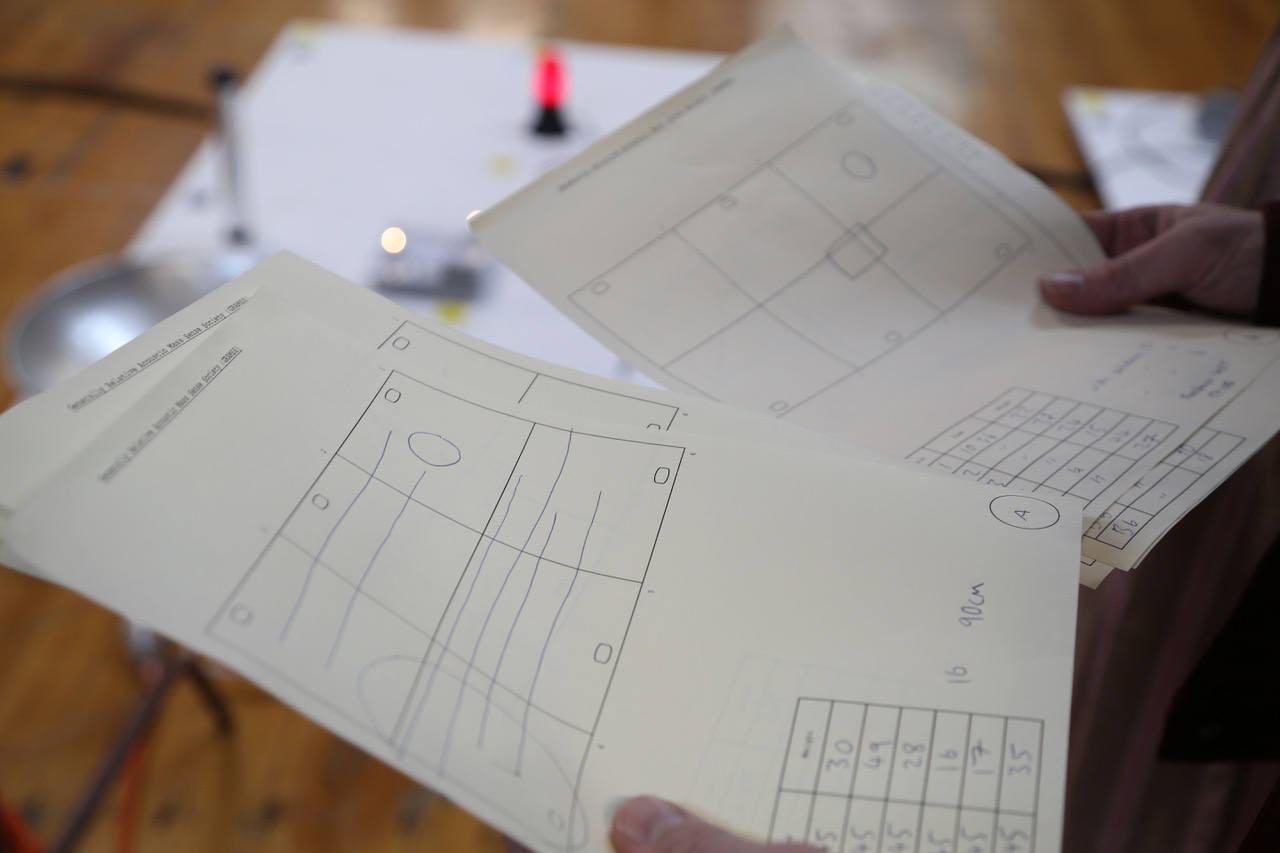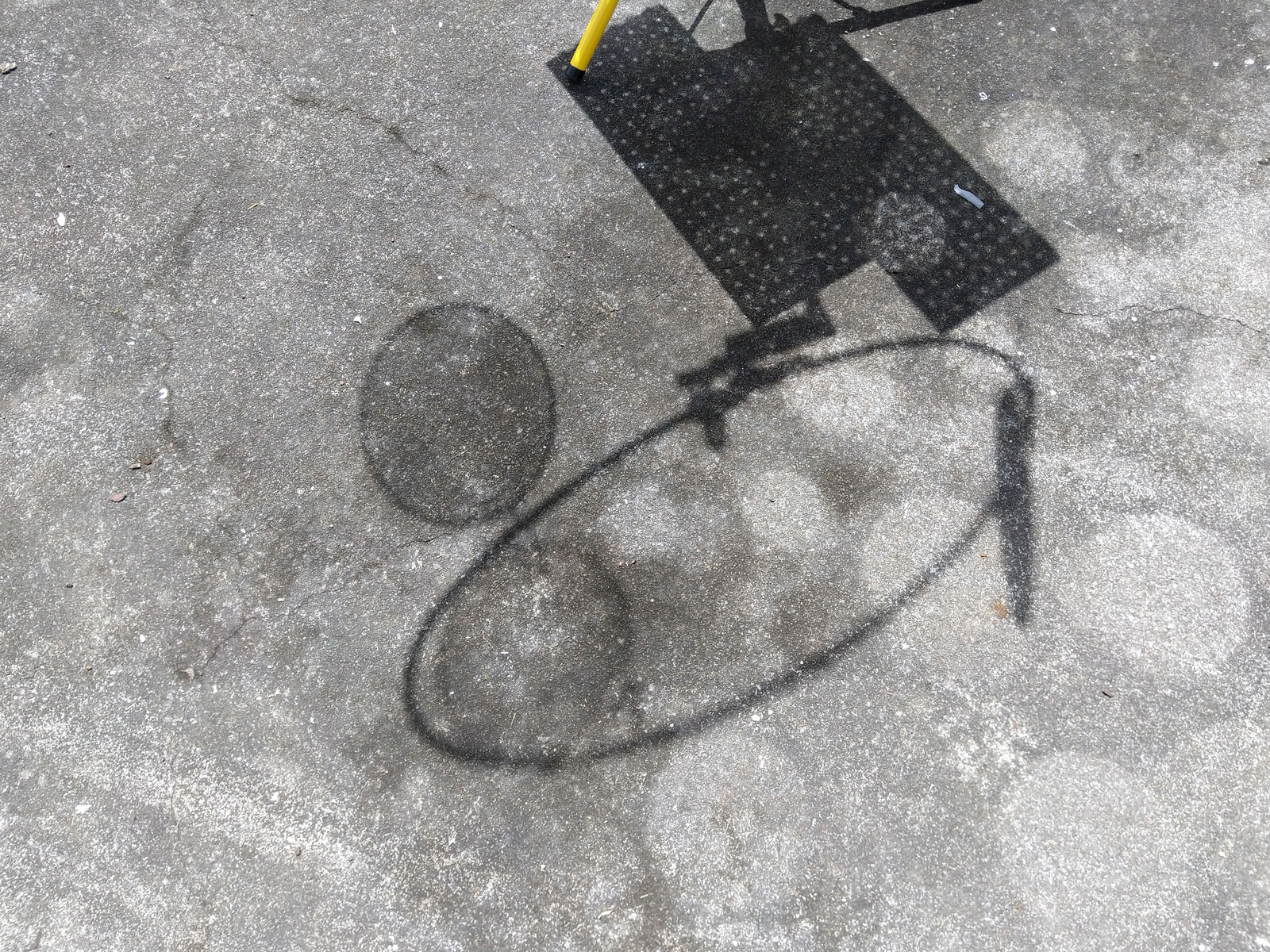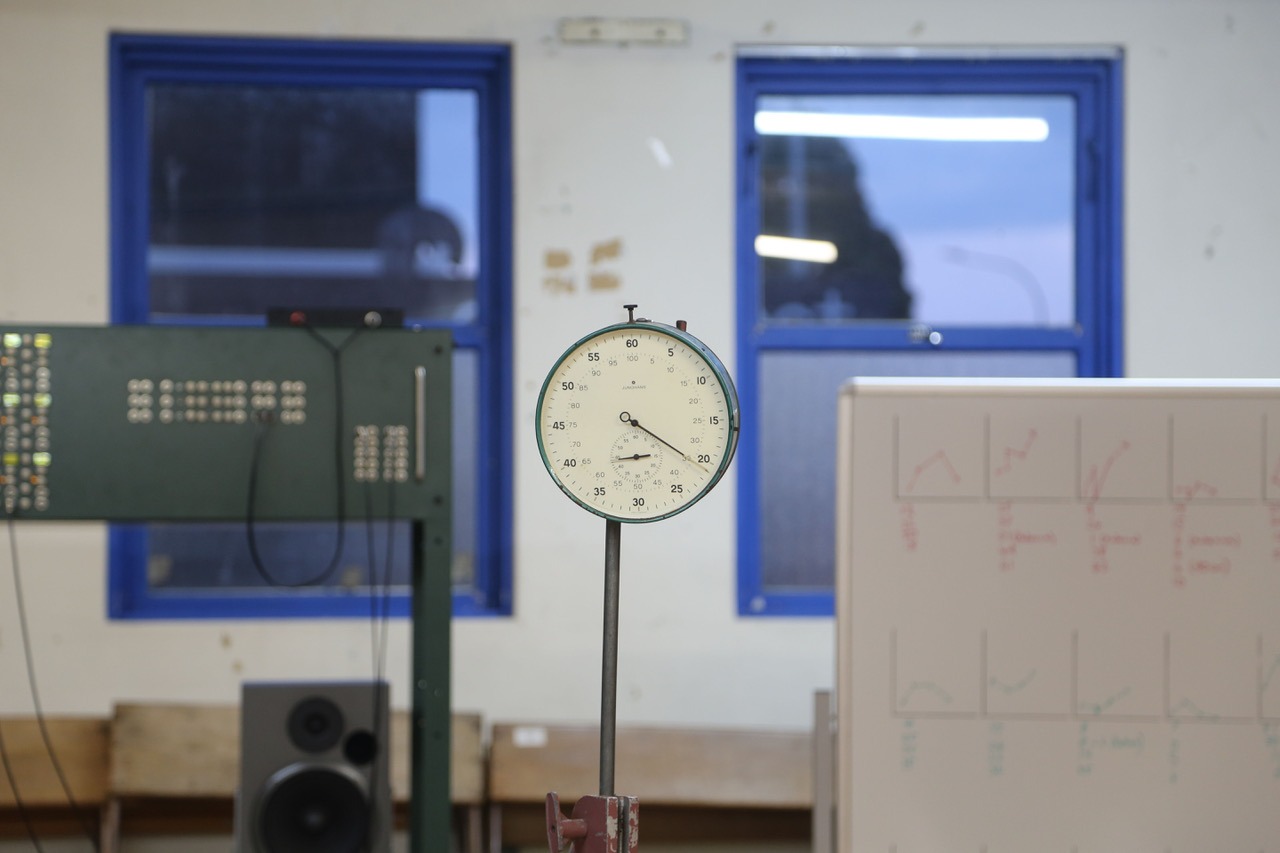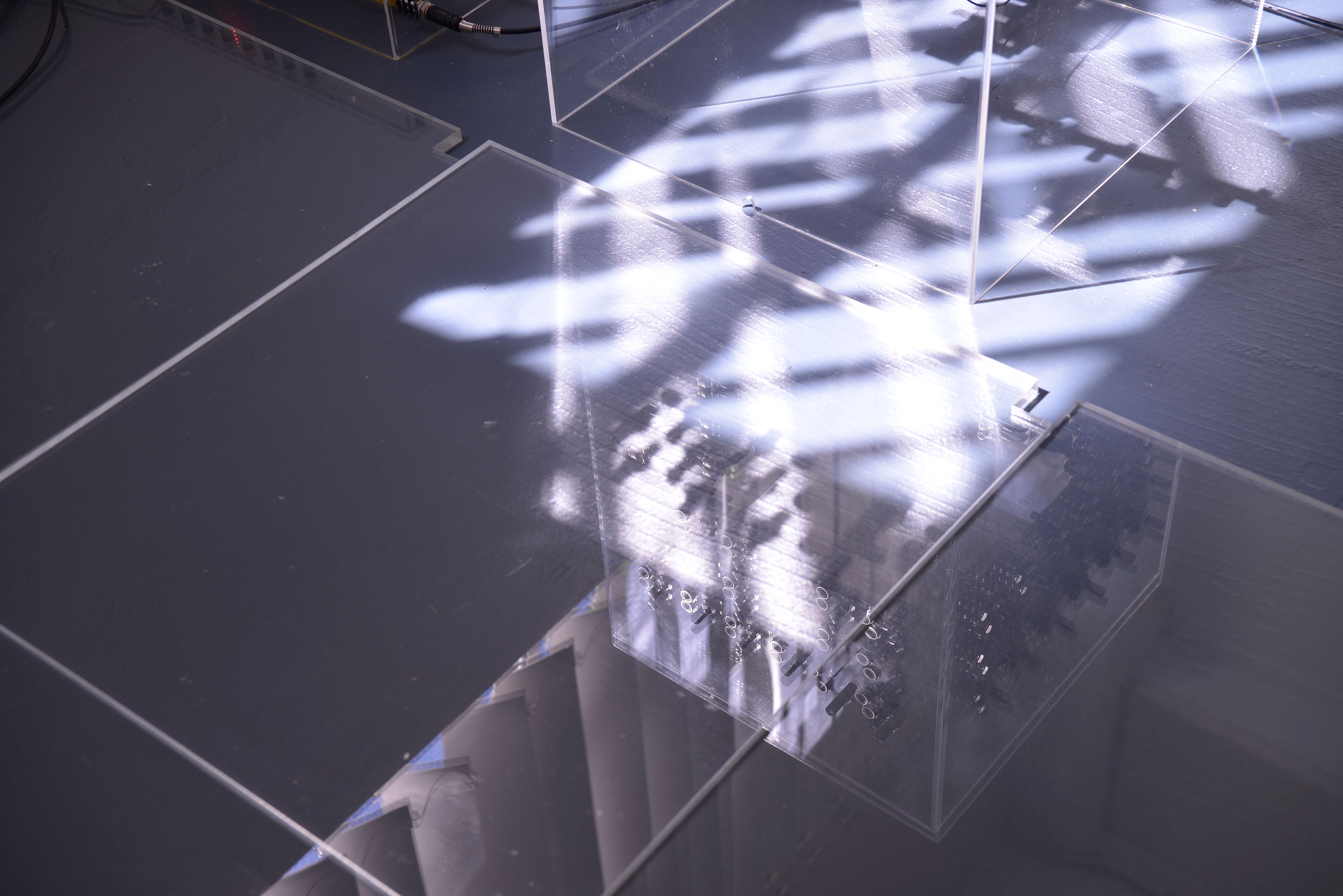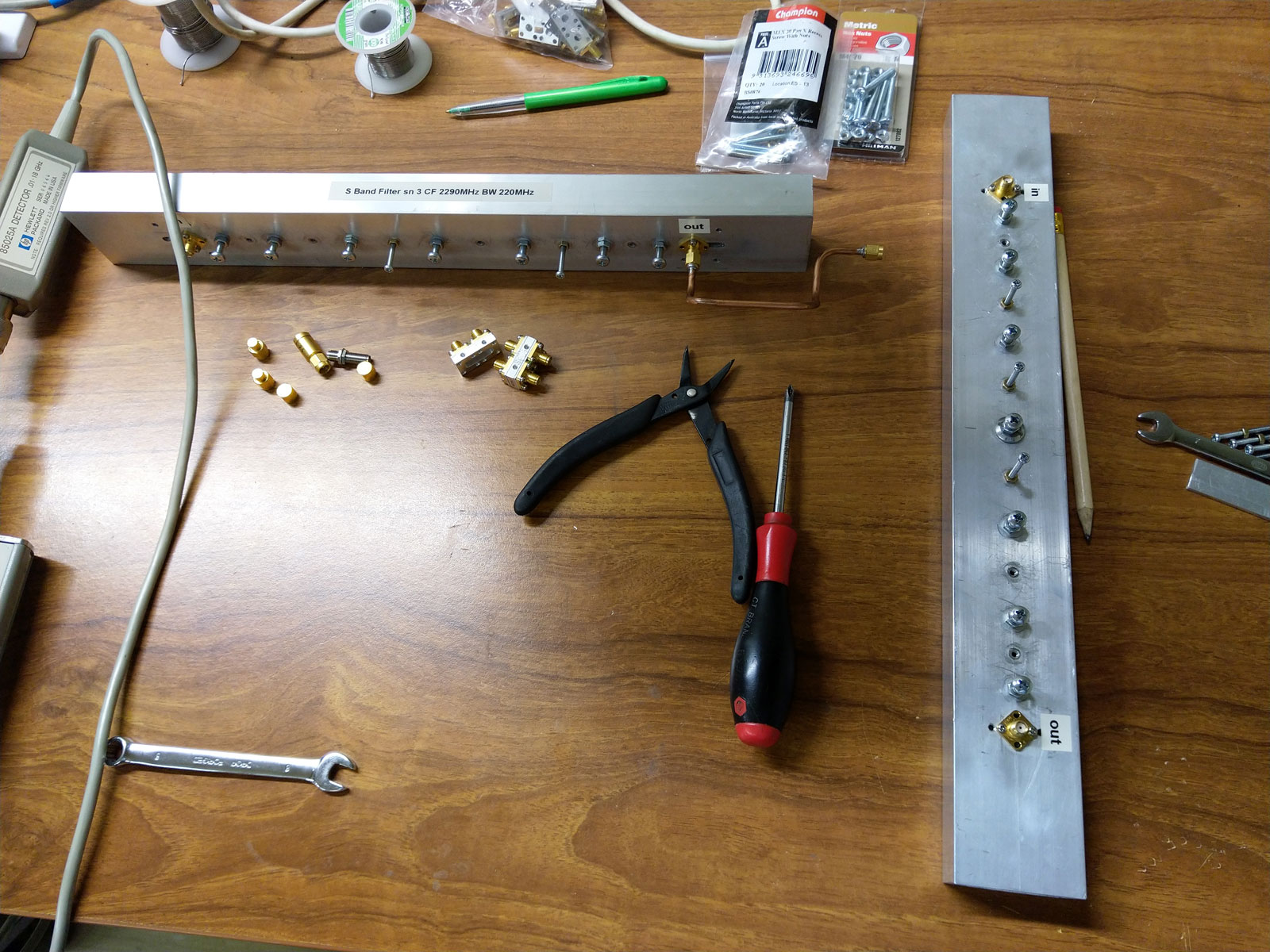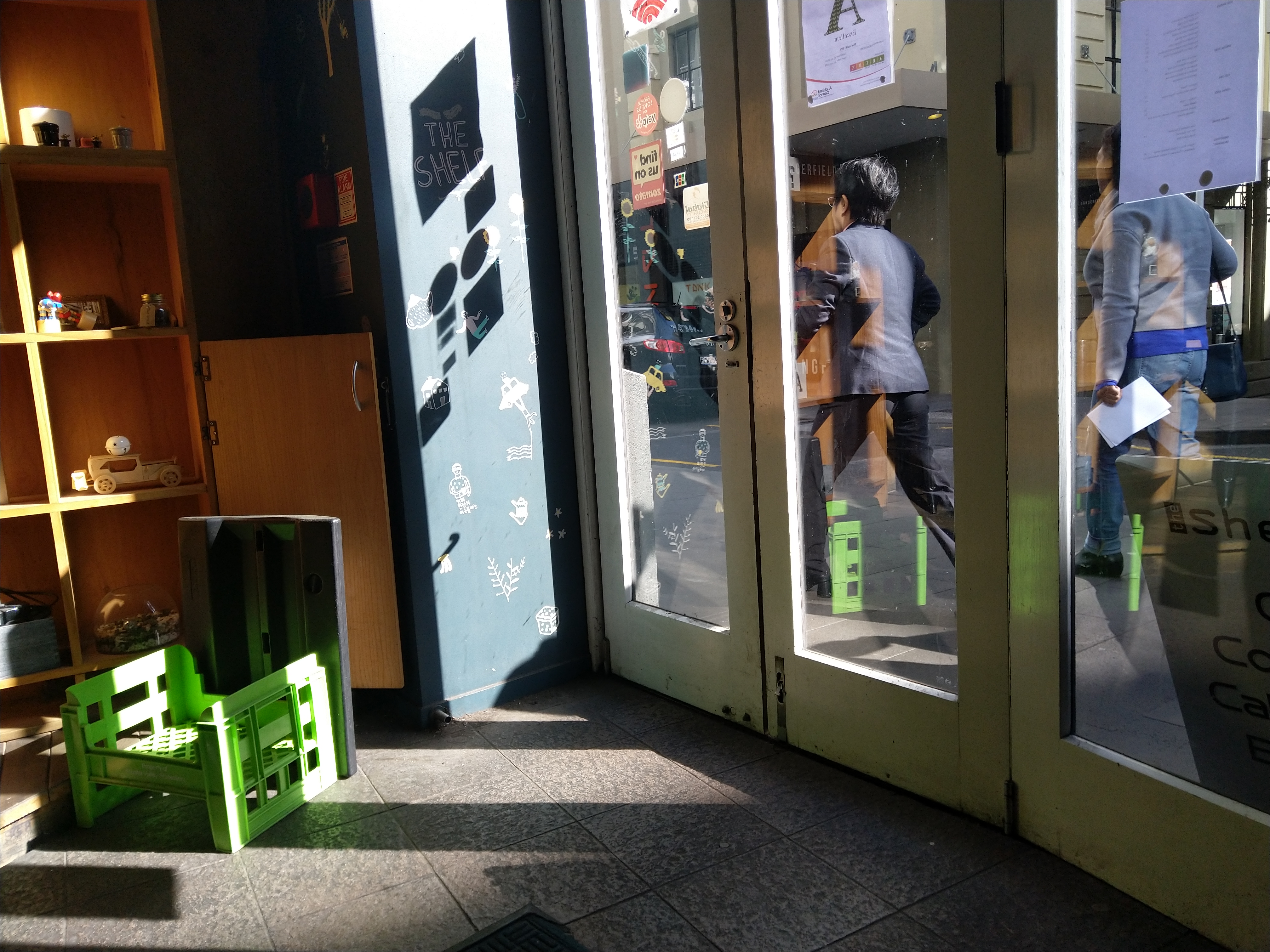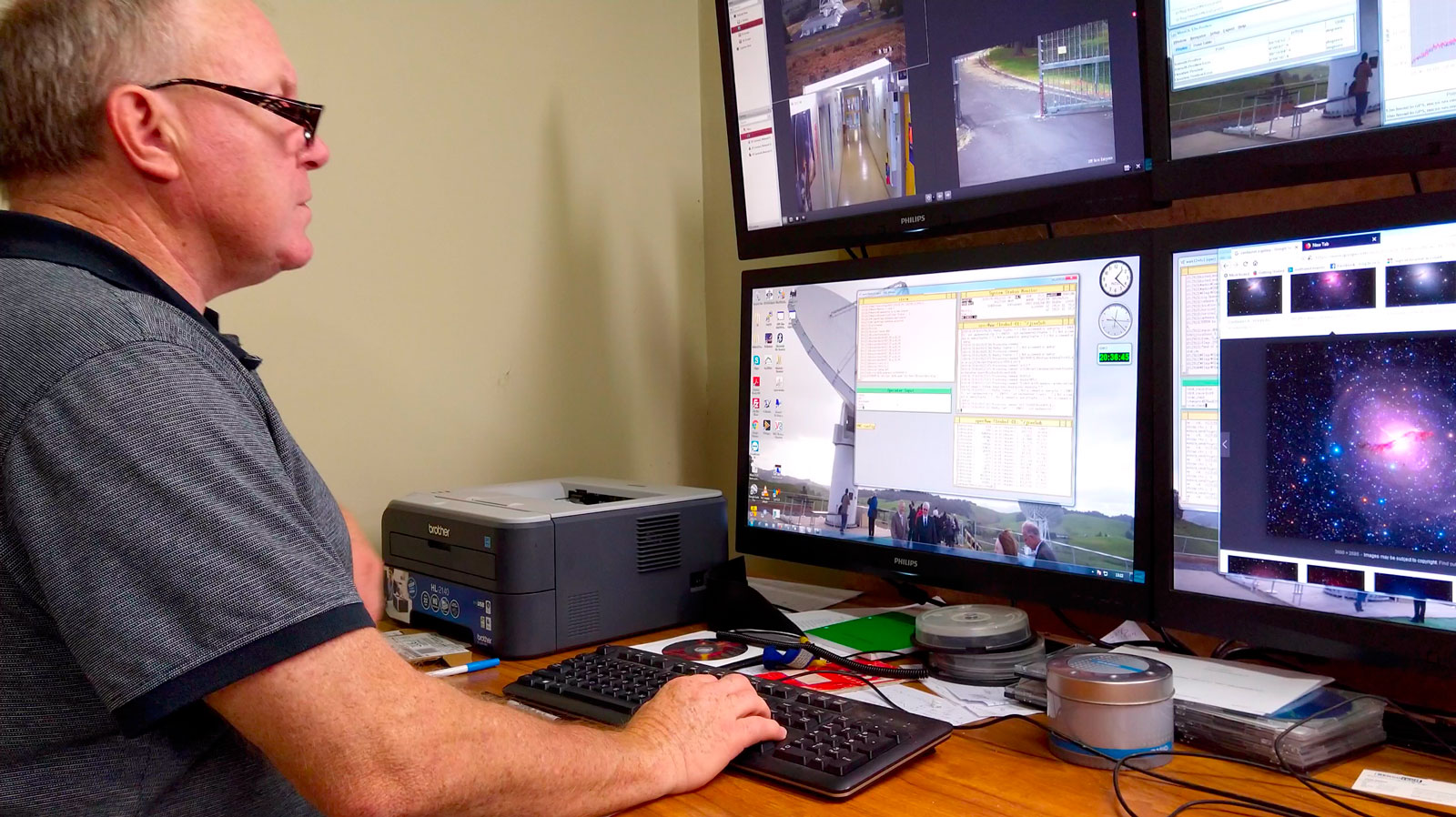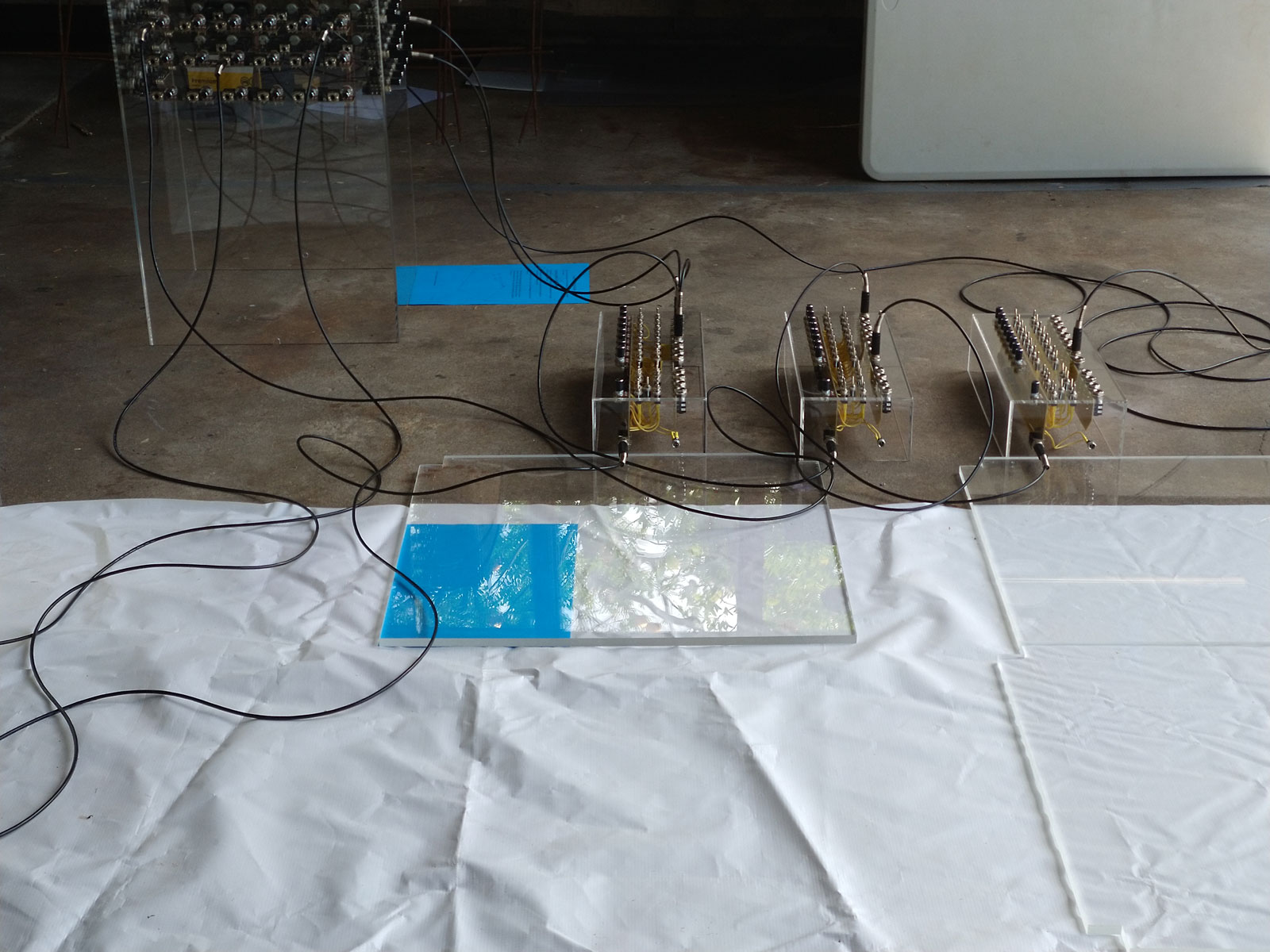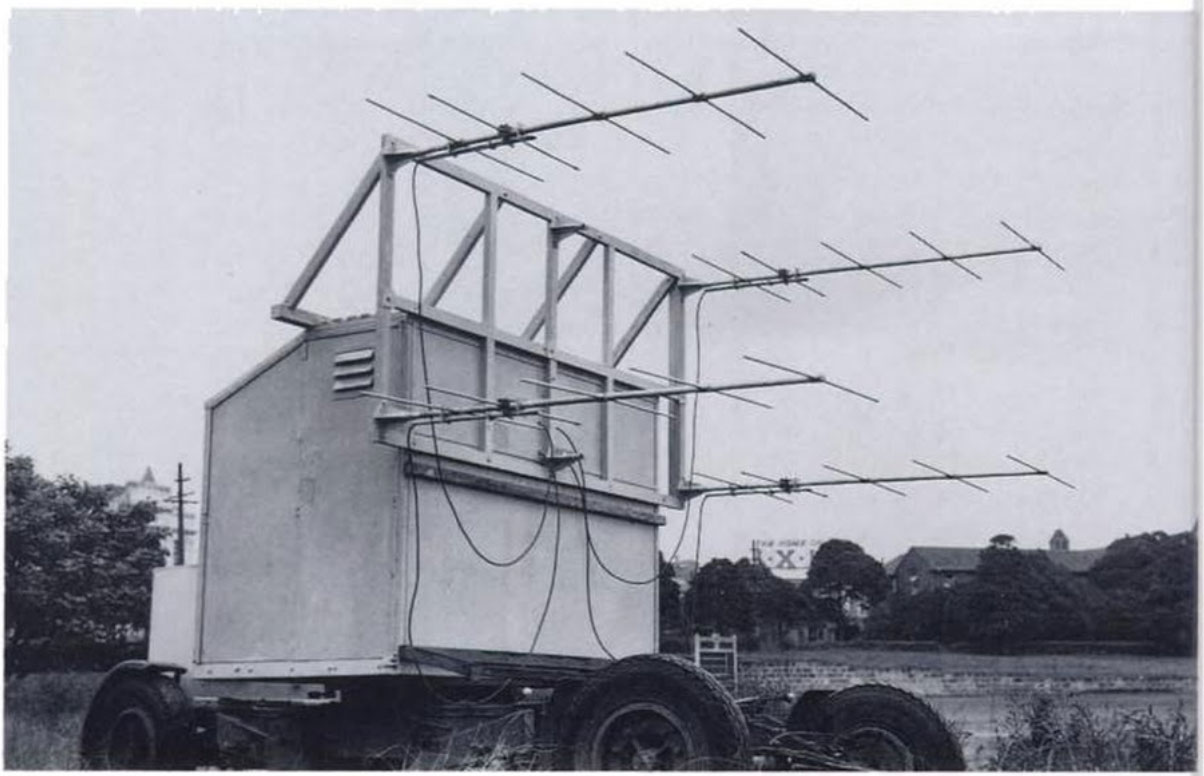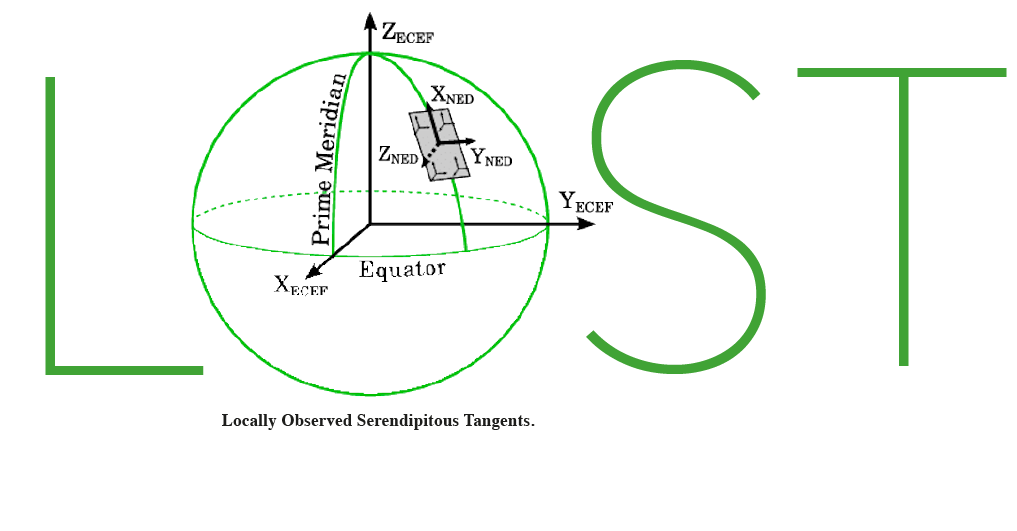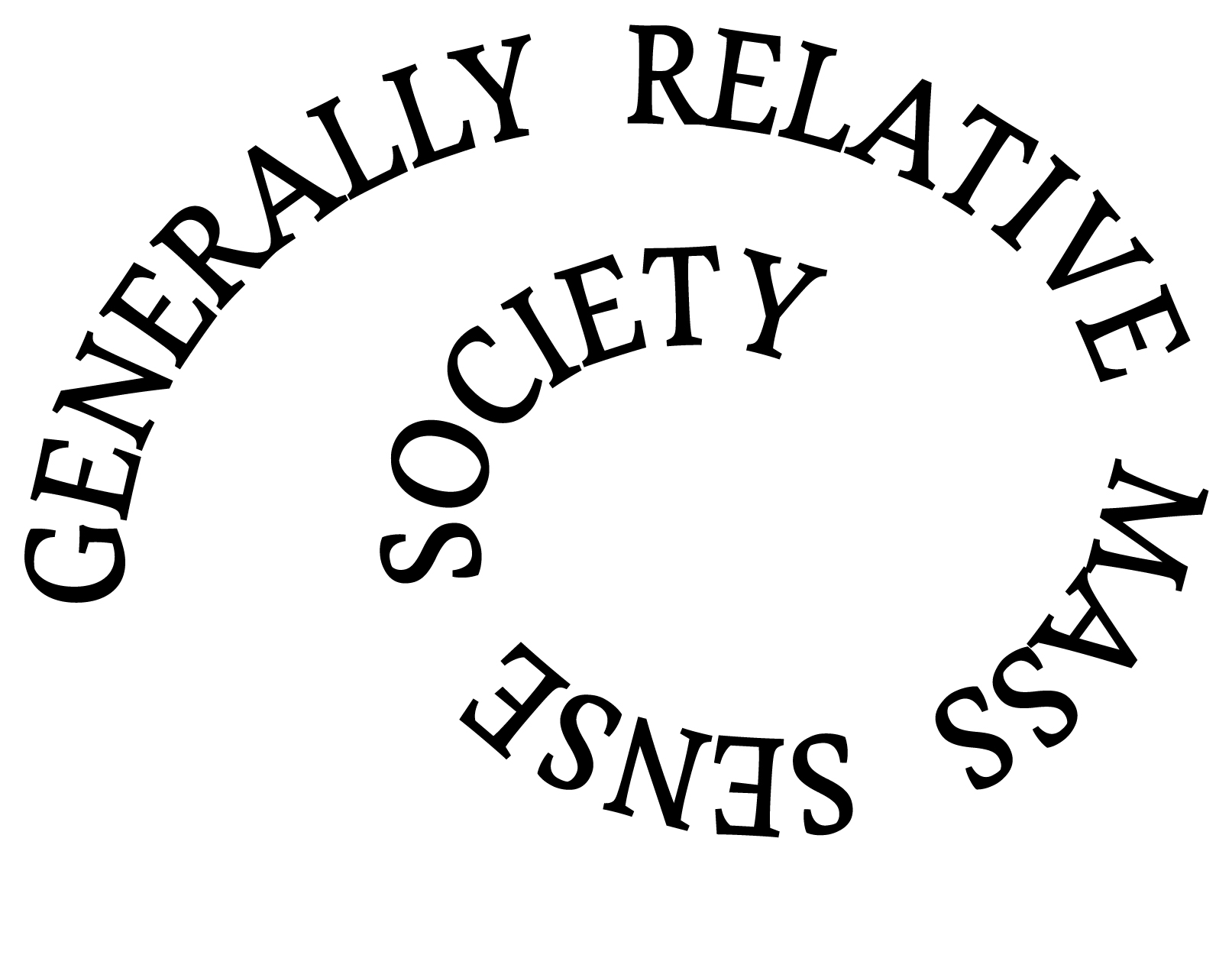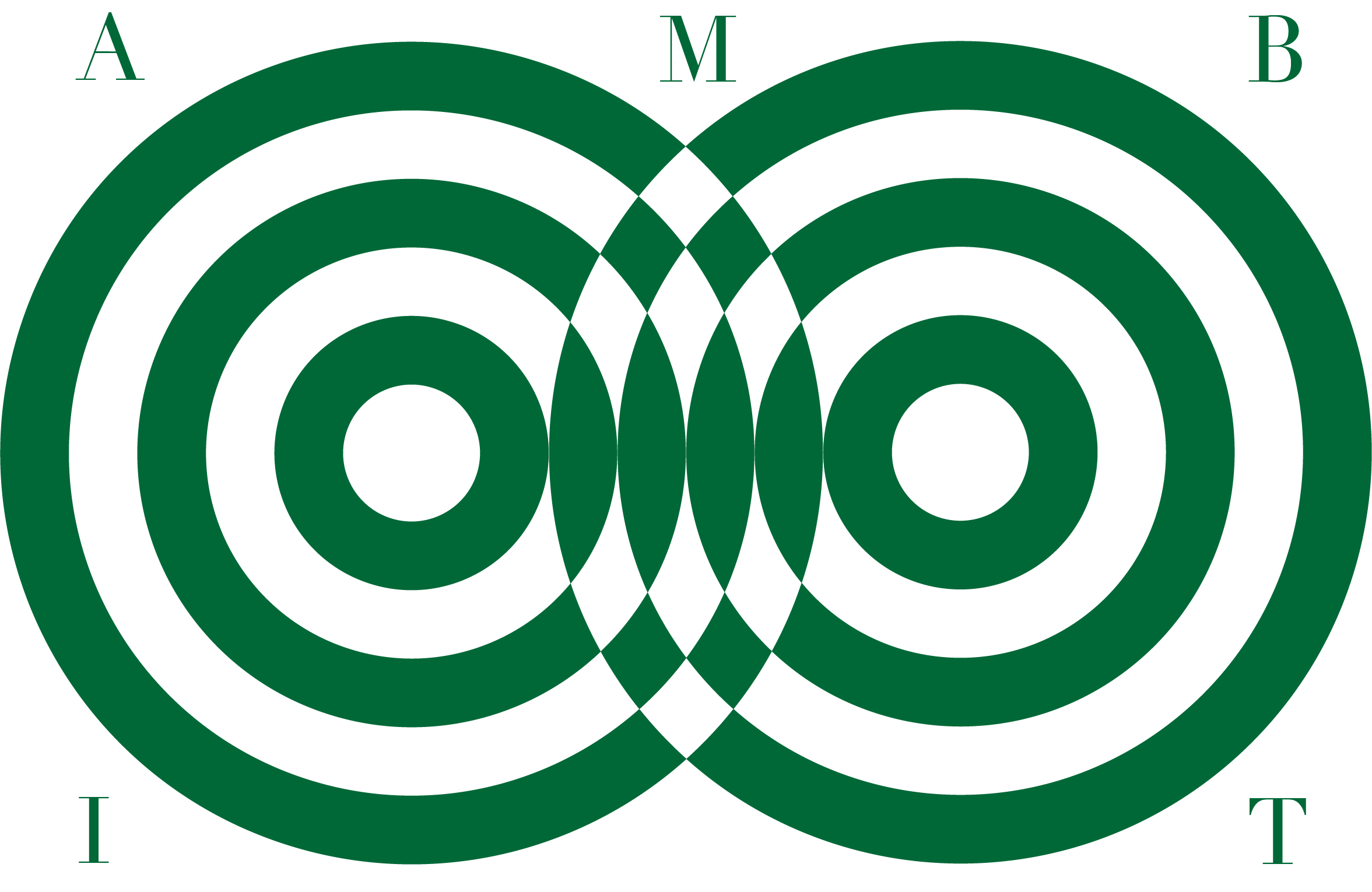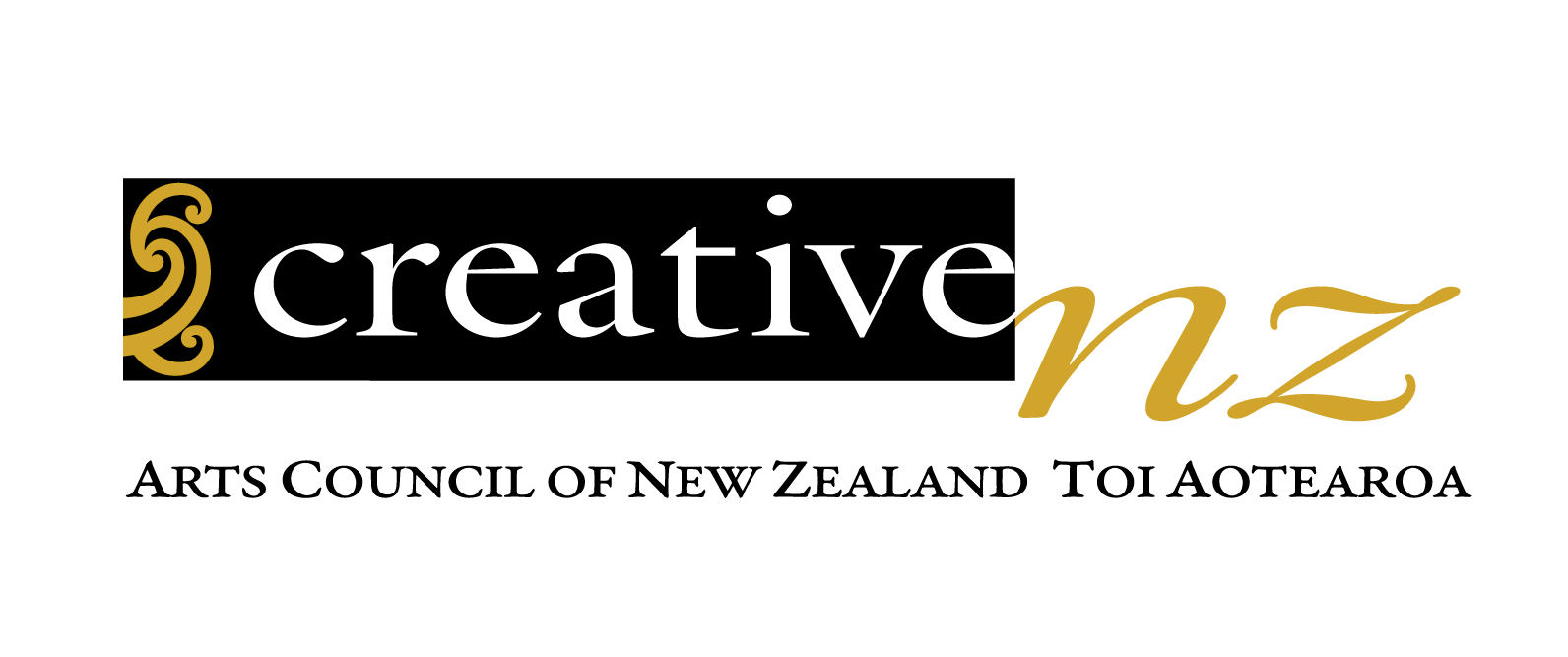
News
Bioart Society members screening
7 Jun 2025 16:00 — 20:00
Location: SOLU

The Observatory Project, Not-measuring ARC, 2024.
Coinciding with the opening week of the Helsinki Biennale and Frame Contemporary Art Finland’s Teurastamo art space tour, Bioart Society is hosting a moving image screening event at SOLU Space.
The screening showcases a collection of short films and moving image works by Bioart Society members. The programme highlights a plurality of mediums and matters being dealt with across our membership, invoking all that is weird and wonderful in the world of art and science.
The screening features works by Annette Arlander, Camille Auer, Tarsh Bates & Sue Hauri-Downing, Leah Beeferman, Burn City Pipers (Kaisu Koski and Nick Dunn), Lucy Davis, Sara ilveskorpi, Ziggy Lever and Eamon Edmundson Wells, Tina Mariane Krogh Madsen, Christelle Mas, Sirja Moberg, Ellenor Rose Nish, Margherita Pevere, Agnieszka Pokrywka, Leena Pukki, Johanna Rotko, Maria Ångerman.
The screening is part of a tour Frame Contemporary Art Finland is organising for Helsinki Biennaali artists and guests, including Frame’s international visiting curators to meet with locale art workers and audiences. The screening is open to anyone interested and you don’t need to join the full tour. The tour travels through multiple art and culture venues in the Teurastamo area – you can read more about the tour at Frame’s website.
https://bioartsociety.fi/projects/solu/activities/bioart-society-members-screening

ASAP
04 April – 23 May 2025
Electromagnetic radiation (detectable from 500kHz-1.6MHz), LPAM radio wave transmissions, amplitude modulation (AM), portable container site office, Adaptable Sound Interferometry Equipment (A SINE), custom antennae, dipoles, AM loop, balun, transmission line, aluminium, antenna, hardware and fixings, field strength meter, gizmo, noticeboard, notes and notices, carrier waves, sidebands, CRT monitor, video (duration variable), custom printed hi-vis vests, cabling (orange power cords, custom signal cable, antennae feed line), portable radios, galvanised metal workbenches, not-measuring events, whiteboard, clipboards, drawings, measurements, not-measurements, steel mesh (ground plane), plastic mesh chairs, bucket, tape (masking, aluminium, and measuring), alligator clips, UNI-T frequency generators, site office computer, signage.

The Observatory Project, ASAP, 2025. Te Wai Ngutu Kākā Gallery.
Part of A Time of Waiting at Te Wai Ngutu Kākā Gallery
The Observatory Project, Layne Waerea, John Vea, Public Share, Kalisolaite 'Uhila, Jeremy Leatinu’u, Ena Kosovac, Chris Braddock, Shannon Te Ao, with forthcoming projects by Olivia Webb, Louise Pōtiki Bryant, Luke Shaw and Madison Kelly Curated by Chris Braddock, John Vea and Stephen Cleland
https://asap.observatory-project.info/
The Observatory Project at the Acoustics and Vibration Research Centre
30-11-24
01-12-24
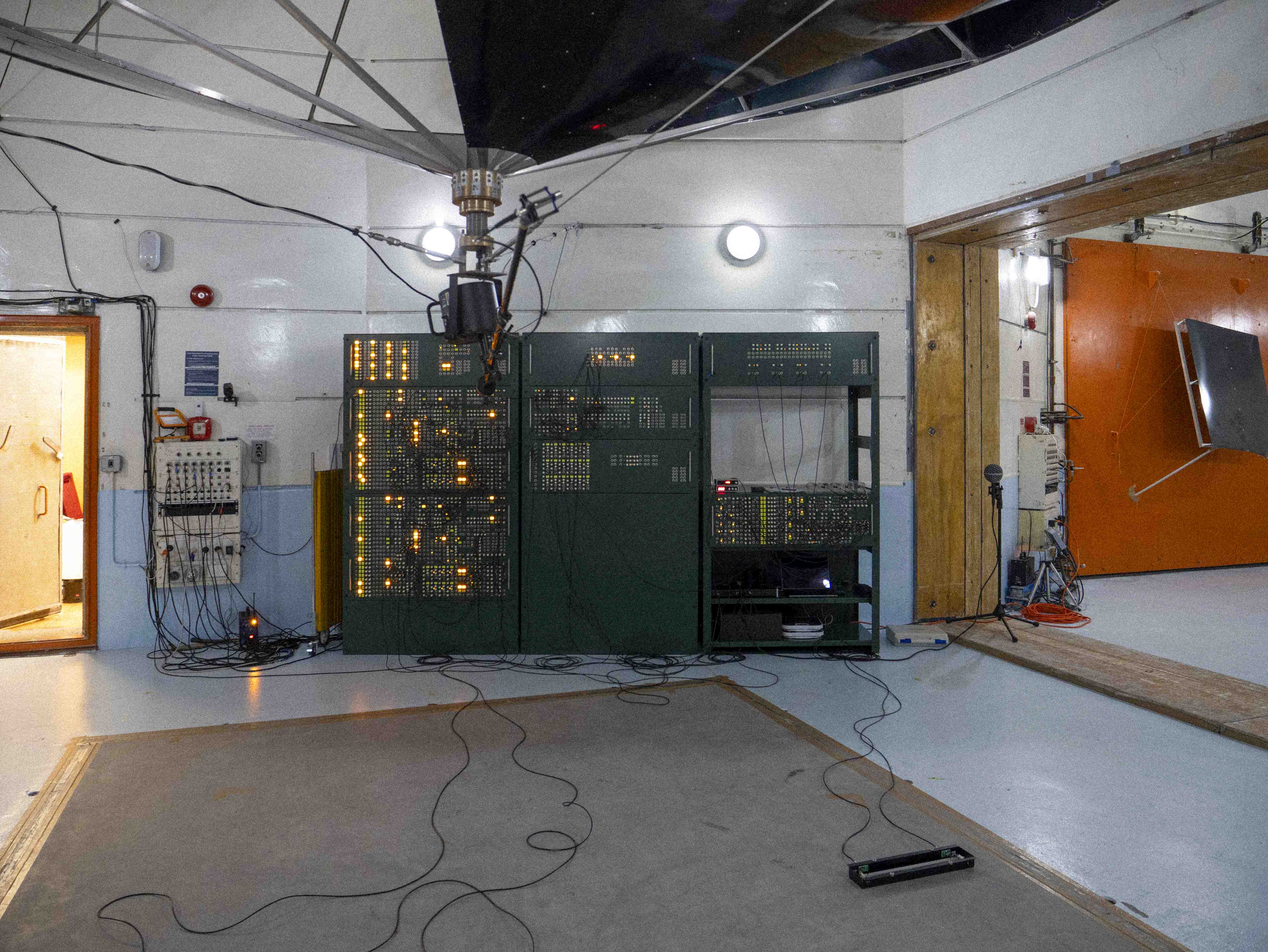
The Acoustics and Vibration Research Centre is comprised of three reverberation chambers and an anechoic chamber used to study acoustics – the field of science associated with the generation, propagation and effects of sound and vibration. Between the 27th November and the 2nd December 2024, The Observatory Project was based at the centre, working in the space to install the Adaptable Sound Interferometry Equipment A SINE, making towards new sound and video artworks, and conducting research towards our concept of "not-measuring events".
With special thanks to Gian Schmid, Andrew Hall, Yousif Badri, and George Dodd from the Acoustics Testing Laboratory, and to the Audio foundation for supporting this event.
https://www.audiofoundation.org.nz/

Non-standard Measures
2024
Masons Screen
30th Jan – 11th March 2024
In Non-standard Measures, members of The Observatory Project use blank tape measures to mark out metric and imperial units of length. In 2023 we visited public standard measures installed in Paris and London in the 18th century. Marking out by hand our own metres, yards, feet, and inches onto blank tape measures, we playfully push against notions of accuracy and standardisation – putting the metre to measure. Recording the street address of the public standard onto the tape, our measurements speak to local systems of measurement rather than any global standard.
The last original standard metre (Metre Étalon) was erected in 1791 in Paris to promote the new definition of the metre as one ten-millionth of an arc from the north pole to the equator (passing through the Paris Meridian). This represented a cultural shift in France from imperial measures decreed by the king to a new system of measurement borne of the Earth itself. During this time, 16 marble shelves were placed in public spaces around Paris to help introduce the concept of the metre to the public. Our project draws on the availability of these standards to the public, who used these objects to cut their own metres to take back into their shops and homes. These shelves were made to hold a single prototype metre bar perfectly, and this bar was used as an international reference until 1960. Today, Metre Etálon is a somewhat hidden marble shelf tucked behind the Jardin du Luxemburg wall. Not so hidden (although equally as ignored by passing tourists) is a nearby replica, a strange cousin made in the 1800s installed higher on a wall next to the Ritz in Pl Vendôme – a high-end shopping quarter.
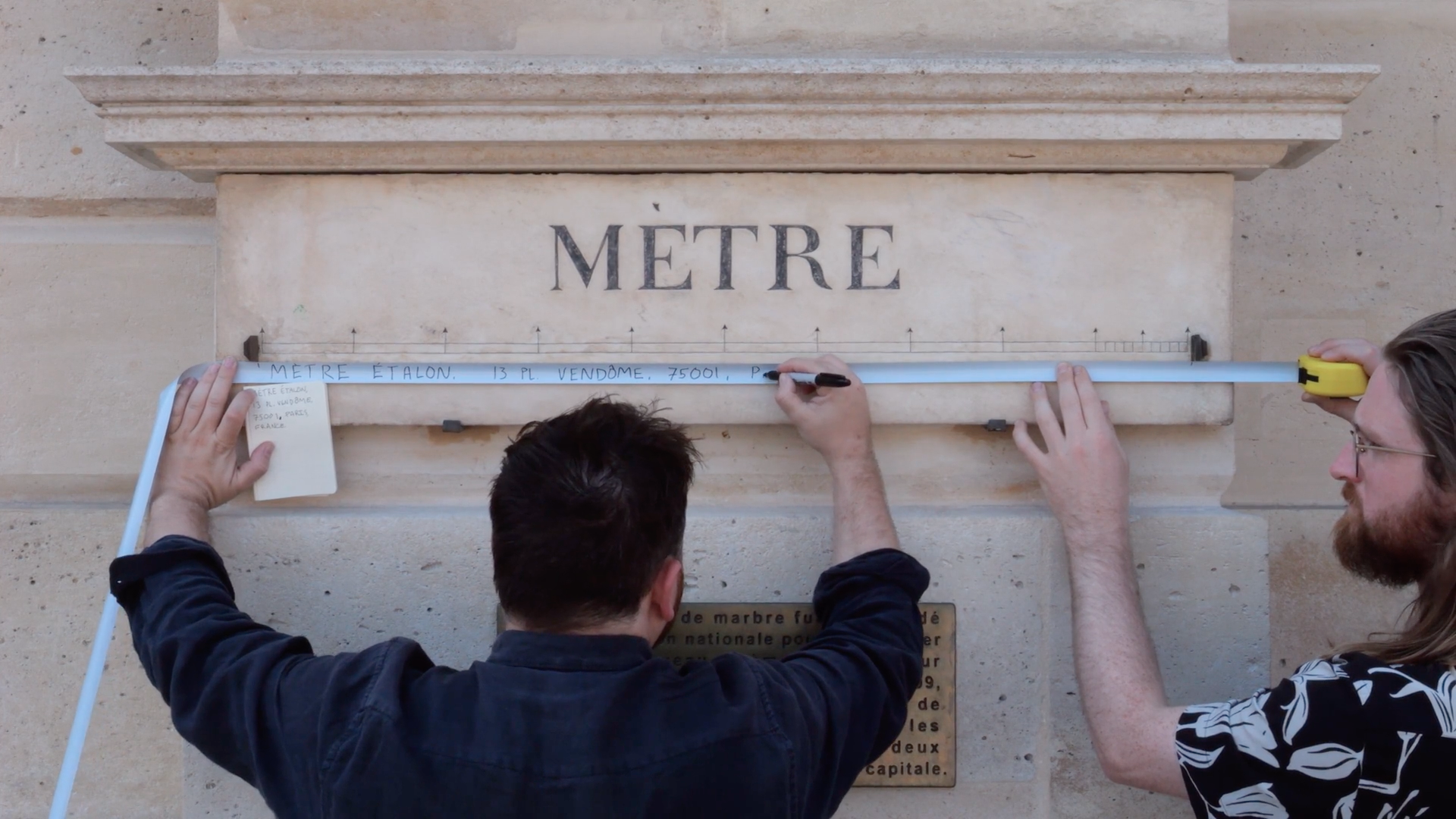
In London, outside Greenwich Observatory is the Imperial Standard Measures, which follows a similar formula, allowing a prototype yard, foot, and inch to rest in the defined space. These measures are based on the body (whose body?) as opposed to the metre, which is based on the Earth. Before standardisation, many villages had a local foot, yard, and inch that differed slightly from those installed in Greenwich. When re-measuring the yard in preparation for this work (912cm), an elderly man nearby proclaimed, “Oh, you of little faith!” A condition of the Prime Meridian being established in Greenwich in 1884 (instead of Paris) was that the UK adopted the metre and metric system. This shift wouldn’t happen until 1960, and imperial measures are still used in many aspects of life in the UK.
Translating these measures into drawings on blank tape measures highlights the absurdity of these now “international standards” and their highly local beginnings. We are interested in how performing the act of making a measurement requires a specific kind of being present and can open up space for uncertainty and the traces of a hand amongst otherwise rigid and rational standards of measurement.
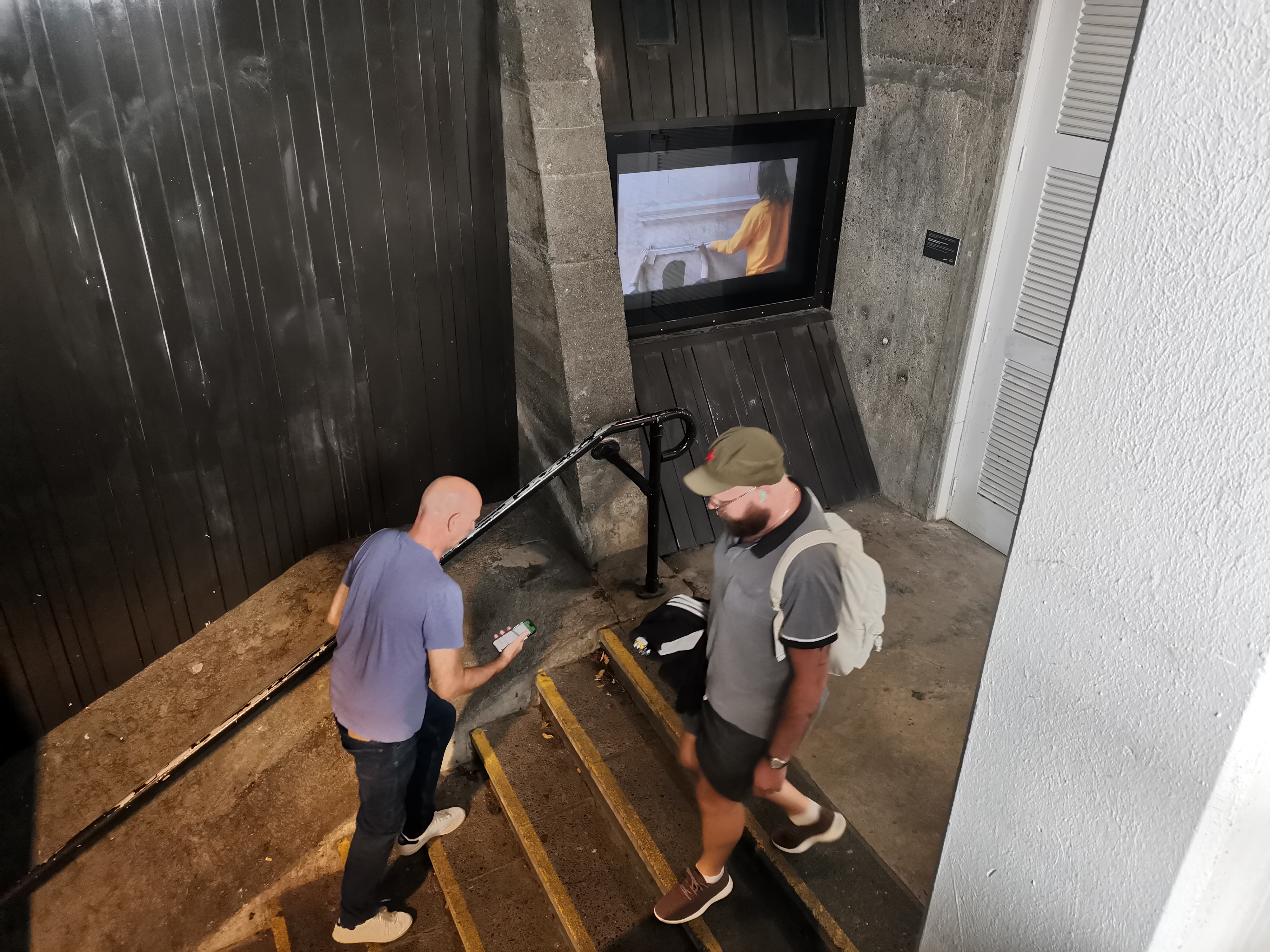
This project was commisioned by CIRCUIT for the Masons Screen, 2024.
The Observatory Project at CERN: Honorary Mention as part of the COLLIDE artist residency 2022
Collide is the flagship programme of Arts at CERN, which invites artists worldwide from all creative disciplines to submit proposals for a research-led residency based on interaction with CERN’s scientific community. This year’s Collide residency award received 388 submissions from 75 countries.
The Observatory Project has been selected as one of three Honorary Mentions, and invited to take part in Arts at CERN’s Guest Artists programme – a short stay at the Laboratory to engage with CERN’s research and community and investigate ideas to support our proposal.
The jury was composed of Mónica Bello, Curator and Head of Arts at CERN, Geneva; Valentino Catricalà, Curator of the SODA Gallery, Manchester; Lluis Nacenta, Director of Hangar, Barcelona; Rosa Pera, independent curator, Barcelona; and Helga Timko, Accelerator Physicist at CERN, Geneva.
Collide has been organised in collaboration with Barcelona’s Institute of Culture and Barcelona City Council since 2019 as part of a three-year collaboration (2019–2021).
Congratulations to Dorota Gawęda and Eglė Kulbokaitė who were awarded the COLLIDE residency award this year!
https://arts.cern/artist/observatory-project
https://home.cern/news/news/cern/dorota-gaweda-and-egle-kulbokaite-win-collide-residency-award
Equinox_1:03PM NZST_23-9-22
23rd September - 8th October
ST PAUL St Gallery
Equinox event 1:03pm (NZST) 23rd September
Opening 5pm 23rd September
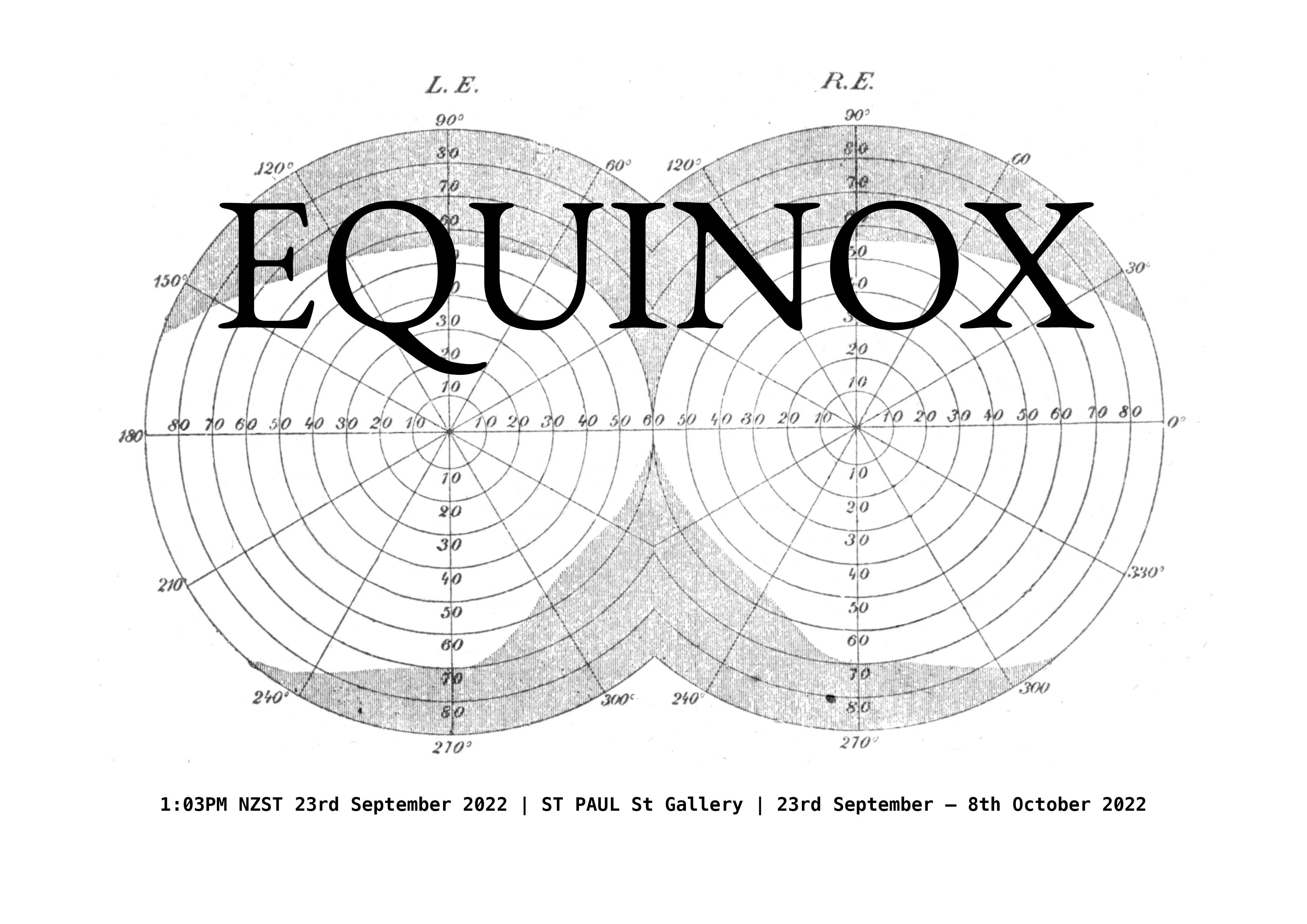
LYNN MARIE-KIRBY (PDT) -7
JESSIKA KENNY (PDT) -7
AZADEH EMADI (BST) +1
WOLFGANG WEILEDER (BST) +1
DILLWYN SMITH (BST) +1
STEVE DUTTON (BST) +1
FIONA WILLIAMS (AEST) +10
RODNEY CROSS (AEST) +10
CHRIS BRADDOCK + Guests (NZST) +12
BALAMOHAN SHINGADE (NZST) +12
LAYNE WAEREA (NZST) +12
EAMON EDMUNDSON-WELLS
(NZST) +12
ZIGGY LEVER (NZST) +12
THE OBSERVATORY PROJECT (NZST) +12
During the Equinox, the plane of Earth's equator passes through the geometric centre of the Sun's disk. In this celestial alignment, the Earth's poles tilt neither toward nor away from the Sun. On the equator, the sun rises exactly due east and sets exactly due west. Only on the Equinox is a 12 hour day and a 12 hour night shared everywhere on Earth. Observing the Equinox is a call to (re)turn one's attention to the exactness of the present and offers a duty to observe our present condition. This exhibition continues a series of conversations that were held during the northward and southward Equinoxes of 2021 and 2022. Participants from all over the world met at these times to discuss notions of time and duration.
The 2022 southward (vernal) Equinox is at 1:03pm (NZST) on Friday the 23rd September.
This project falls on the exact 50-year spring equinox anniversary of Phil Dadson's Earthworks (1971-2) which was documented as the video 'Earthworks' Represents a Temporary Instant in the Continuum of Universal Ebb and Flow.
Time-scale
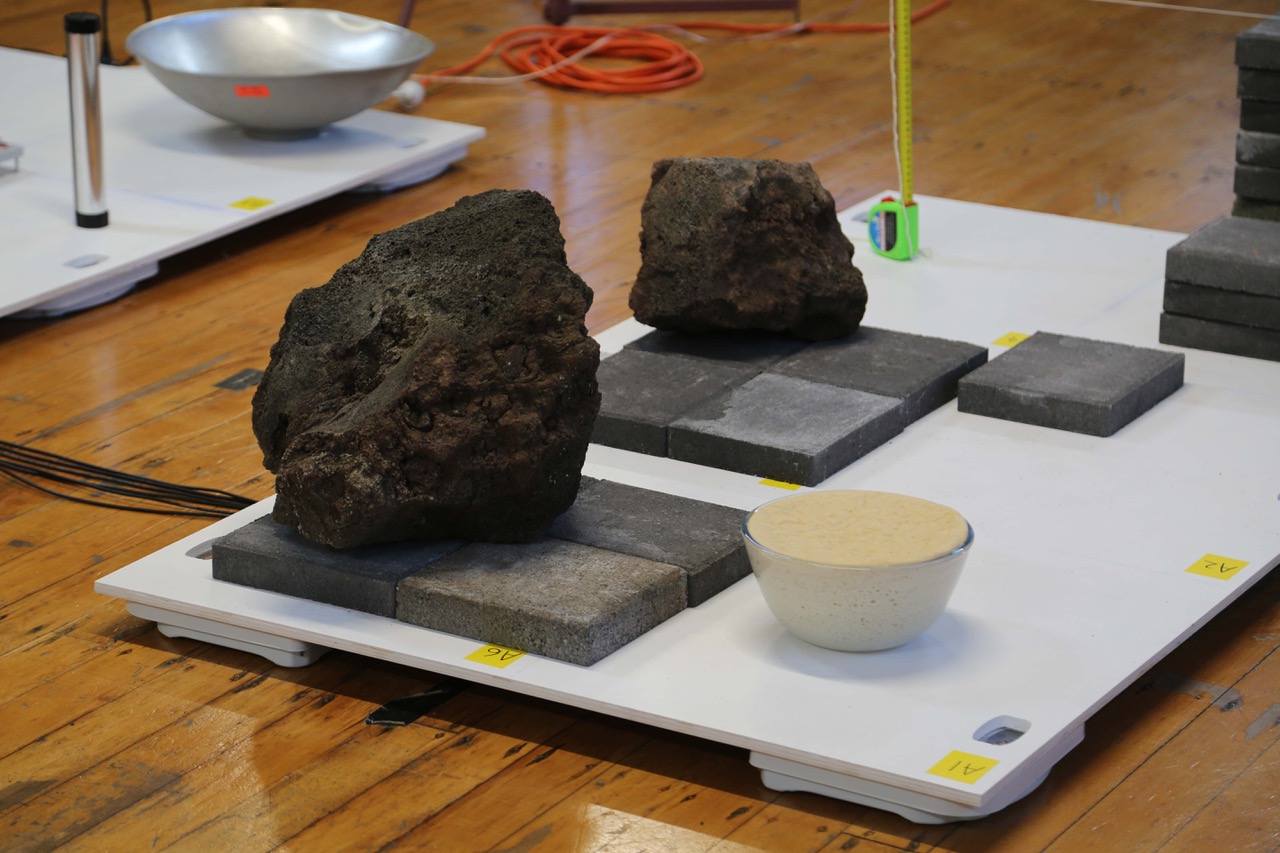
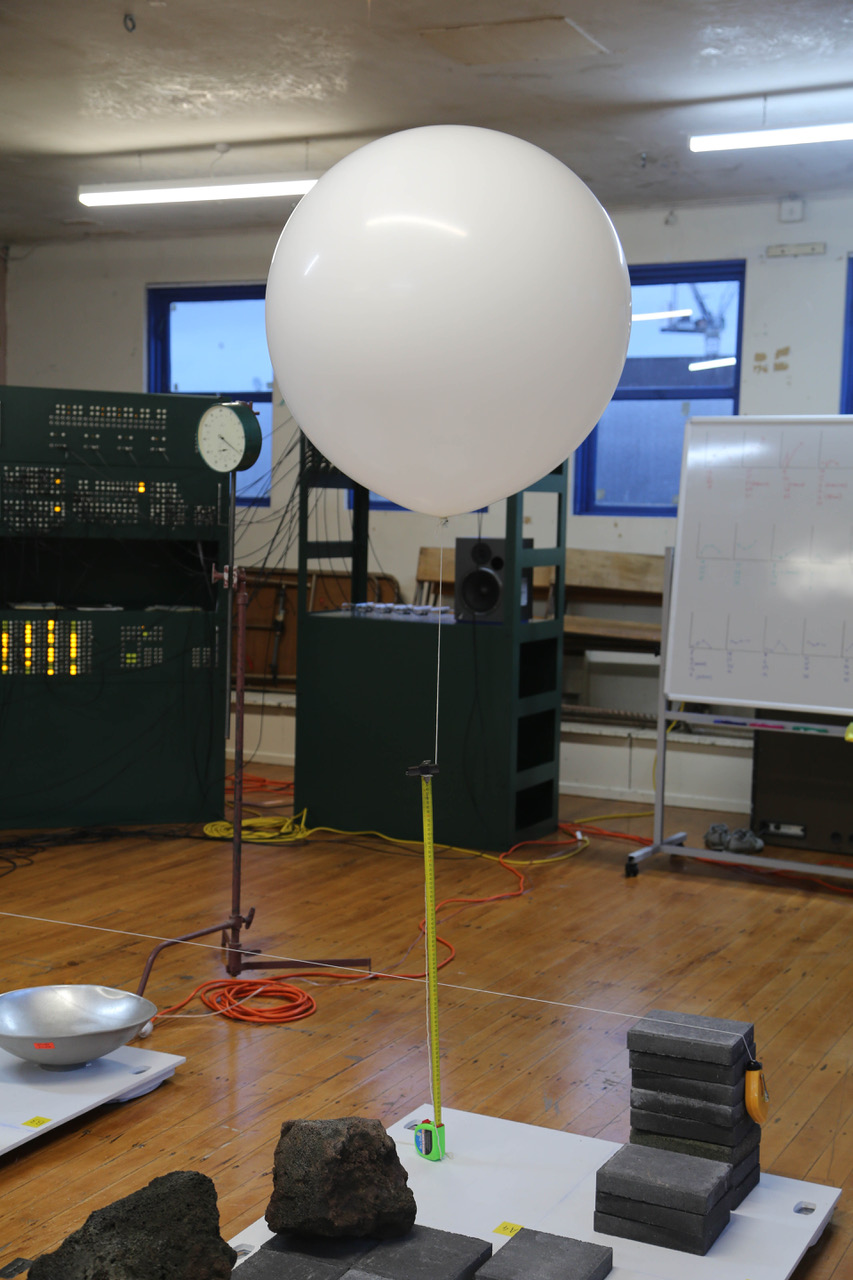
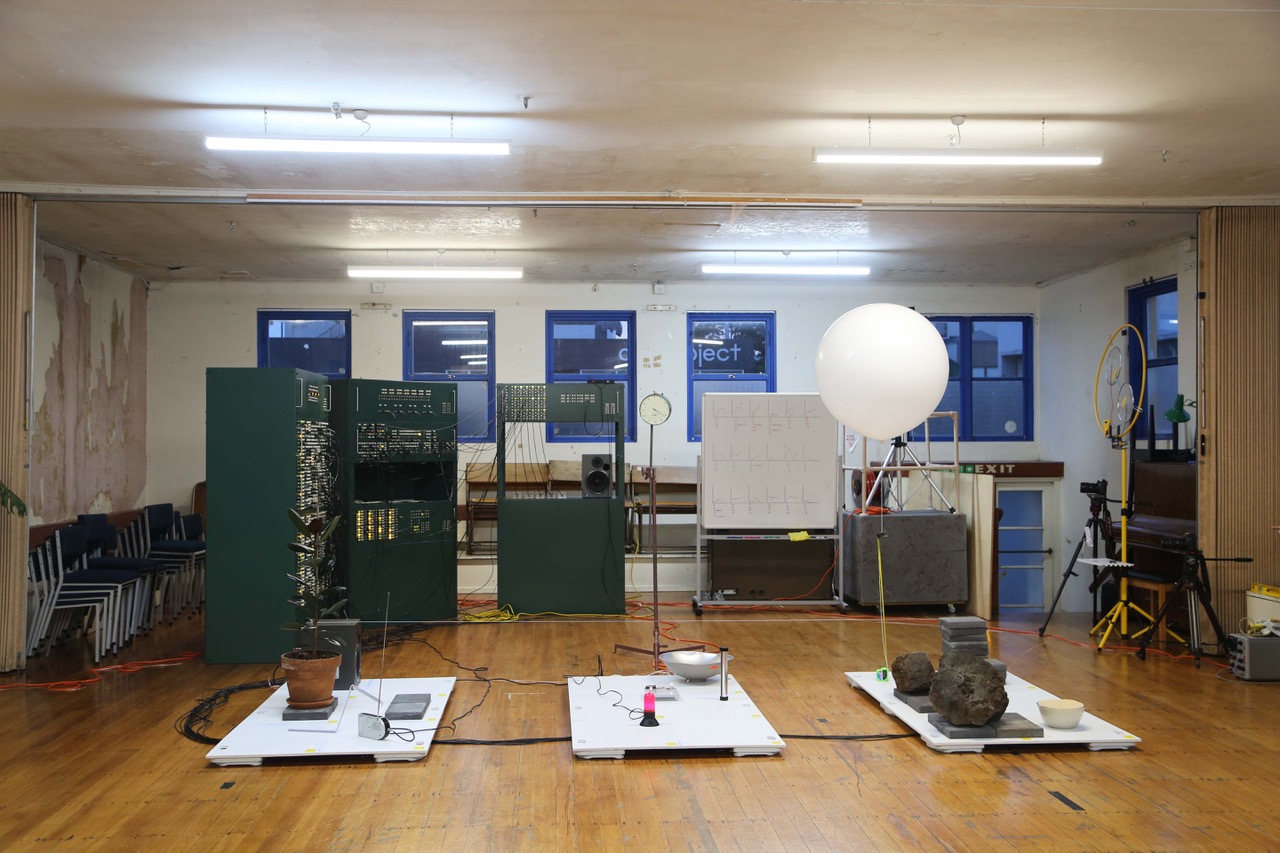


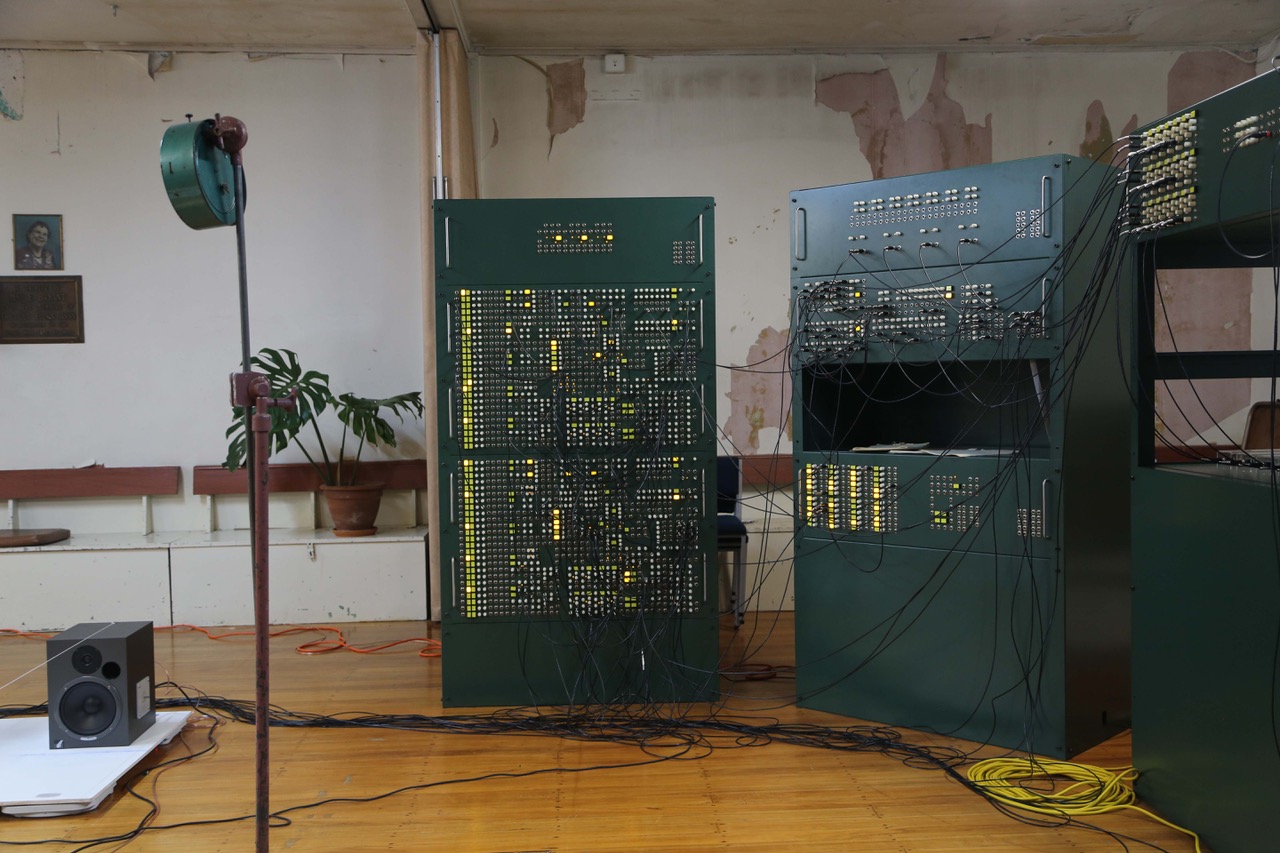

Scheduled between 2pm and 6pm on Sunday 1st August 2021, the Observatory Project working with the Generally Relative Acoustic Mass Sense Society (GRAMSS) to conduct a public observation. Utilising the new Adaptable Sound Interferometry Equipment (A SINE), members of the observatory will carry out an experiment seeking to not-measure the effect/affect/no-effect of mass on a field of elastic sound over a 30-40 minute time frame.
Heavy Rock
Pavers
Oscilloscope
Plum Line
Sourdough
Less Heavy Rock
Rubber Plant
Electronic Laboratory
Dark Room Light
Reflector
Tape Measures (Yellow x5, Green x1)
Folding Ruler (1m)
Weather
Balloon
Radio (100MW-107FM)
Listen to a recording of the event here.

Image: Radio image created by South African Radio Observatory with the Meer Kat telescope (see https://www.sarao.ac.za/south-africas-meerkat-discovers-giant-radio-bubbles-at-centre-of-milky-way/).
May 22nd, 2020 3:30 PM NZST
Streaming online world-wide!
The collaborative Observatory Project engages with the ways that scientists and artists operate through discussions, site visits, and making. With sound, installation, and dialogue, the project explores and expands the frameworks of the astronomical observatory and the art gallery as traditional sites of experimentation in which knowledge is produced and tested. Of particular interest to the project are the physical structures, equipment, and spaces in which observations and experiences occur. How might the site of an observatory be installed to affect the kinds of observations made there?
Stereo Sound, 4:3 aspect ratio, 21:14min duration.
Climb a 30m radio antenna and make observations of a nearby electric fence (extremely local interferometry).
About
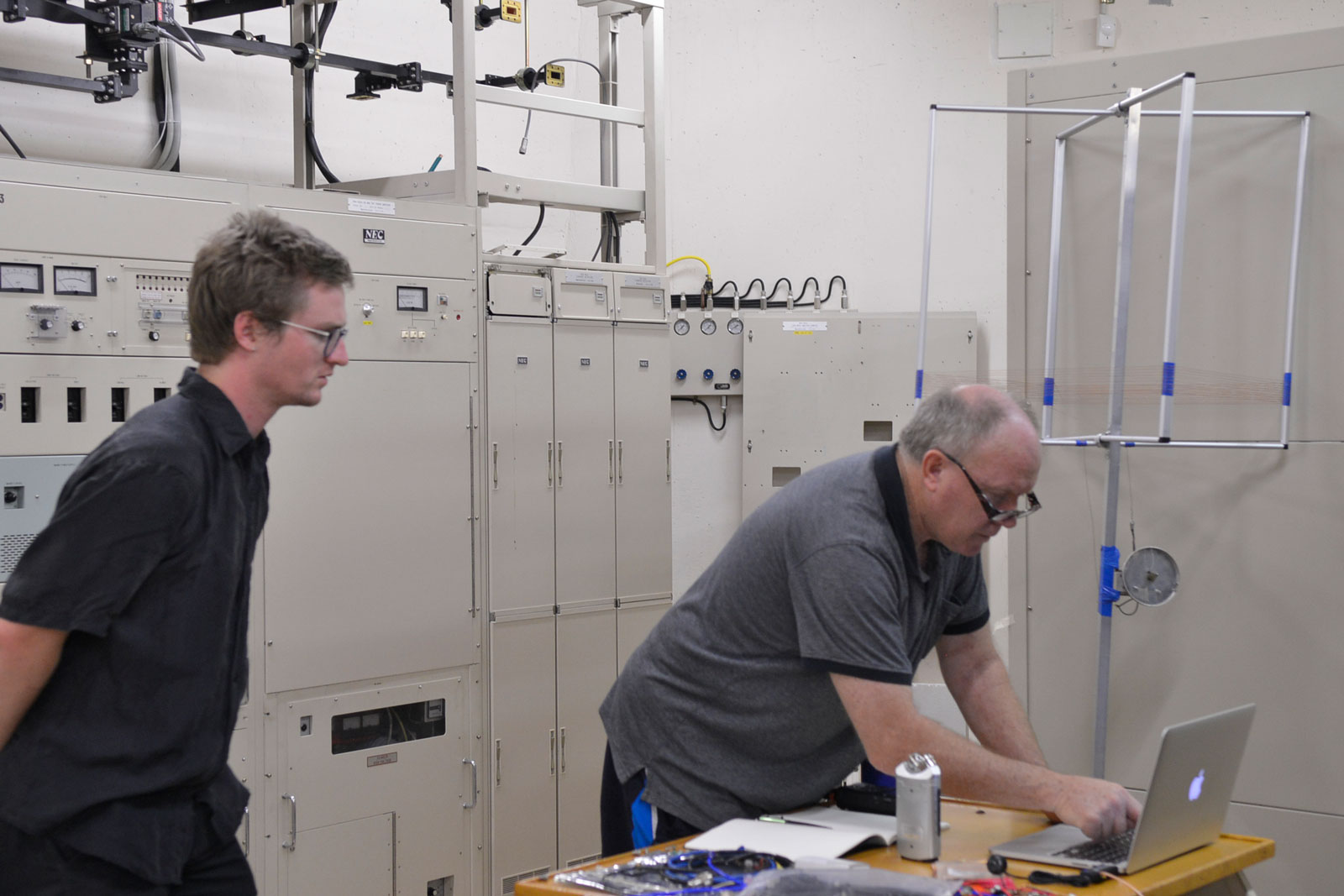
The Observatory Project is an ongoing collaborative art project that explores and critiques the site of “the gallery” and “the observatory”. This project operates at the intersection of art and science, by using sound as a means to diagram, interpret, and imagine scientific processes of observation. Converting data into sound as an interpretive tool is a current trend in scientific data analysis to provide an alternative perspective to visual representation. We are interested in the subjective nature of this process, and how this can be manipulated to serve the politics of individuals and institutions. Using installation we designate spaces within galleries and observatories as institutions in and of themselves, with their own sovereignty and politics. These produce physical and temporal experiences that poetically explore and critique the structures they emulate.
The Observatory Project aims to establish long-term collaborations through the formation of an international network of artists and scientists. The project explores and adapts processes from art and science disciplines to frame our collaborative and cooperative relationships. Key to the project is the site of “the observatory” which includes sites of collaborative art research (for example the studio or the installation as a kind of observatory). We see parallels between the way galleries, installations and observatories could negotiate the outside world, and believe the possibility of “an expanded observatory” will lead to meaningful engagement between artists, scientists, and their general publics. The Observatory Project is engaged in developing a framework for these “expanded observatories” through the model of a research cluster, allowing us to freely explore systems and processes of observation within separate projects (Observatories). Situating these expanded observatories within a research cluster creates dialogue around the processes and motivations shared between artists and scientists. Examples of the types of observatory associated with the project include optical, conversational, temporary, web-based, radio, site-specific, subjective, and social.
Not-Measuring
Not-measuring differs from simply not taking measurements. To make a not-measurement, the action of measuring is performed with an intention to not produce data. Any traces of that not-measurement event act as documentation, reframing the event as an artwork. Not-measuring events interrupt the normal processes of making measurements and observations by focusing on the act of measuring as making.
Stereo Sound, 4:3 aspect ratio, 35:15min duration.
Rotate a 30m radio antenna 360° on the azimuth, and then 90° on the zenith.
AFM
The Observatory Project: A SINE Transmissions
May 2020 – ongoing
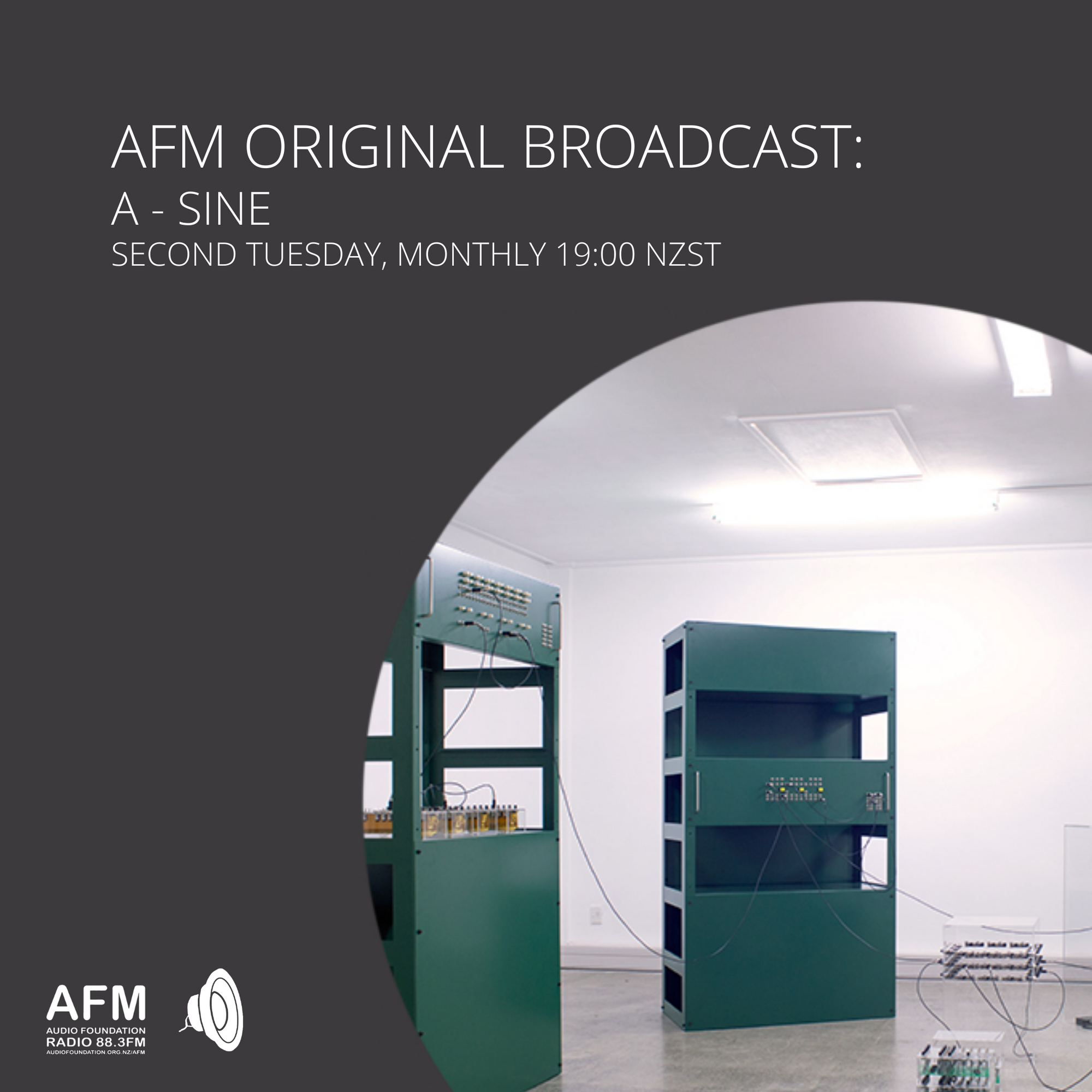
The Observatory Project transmitted live "calibrations " of their Adaptable Sound Interferometry Equipment (A SINE) every month on Audio Foundation's AFM radio stadio between May and December 2020.
AFM regularly hosts broadcasts by the Observatory Project. These events feature sound-works made using their generative sound sculpture A SINE at various stages of its completion in 2020. Here, analogue frequencies are generated and shaped by a series of physical processes, strategies, and tools of observation developed through conversation between the artists and guest scientists. These sonic frameworks are explored live during the AFM broadcasts, often combined with recordings of conversations, observatory spaces, and experiments in the field.
The Observatory Project is a collaborative project observes and engages the ways in which scientists and artists operate. The project is headed by Ziggy Lever and Eamon Edmundson-Wells, exploring and expanding the idea of the observatory as a site that contextualises perceptions.
A SINE is an art object, a tool for collaboration using the language of both scientific and artistic processes, a sound artwork, a data reimaginer, and an installation in progress.

